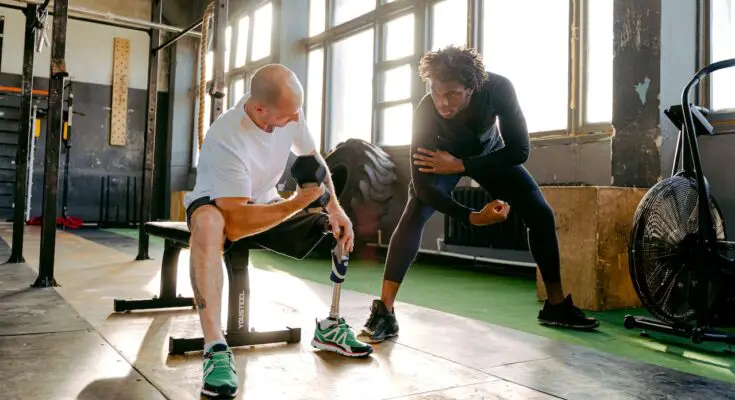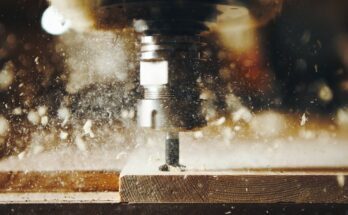It is common to experience sore muscles or body aches after a brutal full-body training session. Many individuals feel satisfied when they experience pain after working out as they feel that the body is undergoing positive changes. However, experiencing pain from full-body training may not necessarily be a good thing. It could only mean that your body is either trying to get used to a new workout regimen or you pushed yourself too hard during the workout.
The pain and muscle soreness that you usually experience a day or two after the workout result from delayed onset muscle soreness. As you experience the pain, the muscles in your body are busy recovering and rebuilding. If you have pain post-workout, you may experience joint stiffness, weakness, and reduced mobility. Here are some tips and tricks to help you recover faster and reduce pain after full-body training.
Warm Up
Before starting a workout, stretch your muscle through stretching exercises for at least ten to fifteen minutes. This will help with blood flow to the muscles undergoing the training and will prime the muscles to rebuilding post the training activity. Therefore, before you exercise, make sure your muscles are warm. If you are doing a workout like mobility training with a professional, they will guide you on how to warm up before a workout session.
Cool Down
Besides warming up before working out, also ensure to actively cool down post-workout to help the muscles recover. Decrease activity towards the end of the workout instead of coming to an abrupt stop. This helps the blood flow, reduces the blood lactate, which is mainly responsible for soreness, and also helps increase your stamina.
Nourish Your Body
When you are invested in rigorous training, you must eat the right food that nourishes your body and helps it recover. For instance, you need carbohydrates to give you energy for the workout, healthy fats to help lubricate your joints, and proteins to help repair your muscles. Therefore, you must ensure timely intake of the right food before and after workouts. Even if you are on a calorie-deficit diet, do not stay hungry. Instead, focus on eating healthy food.
Another element you must add to the diet is fatty acids since they help with inflammation leading to muscle soreness. Food like walnuts, avocado, and salmon are rich in omega-3 fatty acids and can give you plenty of nutrition.
Keep Yourself Hydrated
Dehydration can be very damaging when trying to recover, as it hinders the process. Adequate water intake is important to flush out metabolic waste during the workout. Moreover, when you work out, you lose plenty of fluid in the form of sweat, making it important to increase water intake. Drink at least eight ounces of water following fifteen minutes to half an hour of exercise. Remember, not drinking enough will only prolong the recovery process.
Drink Cherry Juice
Cherry juice has high anti-inflammatory properties and contains antioxidants which make it beneficial for reducing muscle soreness and helping you recover. Therefore, drinking tart cherry juice may help speed up the recovery process after training. However, read the juice contents before drinking it, particularly if you are using cherry extract, as it may have a lot of sugar.
Get a Massage
Massaging sore muscles after the training can help relieve muscle tightness and help with the pain. You can use a foam roller to massage between and post-workout activities to boost your mobility and relieve soreness. You can also rub the sore points to ease the knots. This facilitates blood flow and pushes the accumulated fluids out of the body, thus speeding up the recovery.
Use Medication
If you are feeling sore, you can use topical ointments for coolness and to numb the pain. However, while these provide temporary relief, they do not speed up the recovery. You may also use anti-inflammatory medication to reduce soreness. However, do keep in mind that these medications are not good for muscle development. Hence use them with caution and only when pain is not bearable. You can also use natural anti-inflammatory ingredients like turmeric.
Stay Active
You may be tempted to skip a workout if the pain is discomforting. However, maintaining light activity supports blood circulation and flushes out the waste and chemicals that trigger body pains. Therefore, keep moving even if you are feeling sore, as it will help you heal.
Final Thoughts
While feeling a little sore after you have done full-body training is normal, you do not have to suffer in silence. There are plenty of ways to help you bounce back faster and recover from the pain and this article offers a few of the many things you can do to manage and reduce pain.
Besides eating and drinking right and following the right pre and post-workout protocol, you must also focus on resting your body well and getting good sleep so it gets time to recover and replenish its energy stores.


